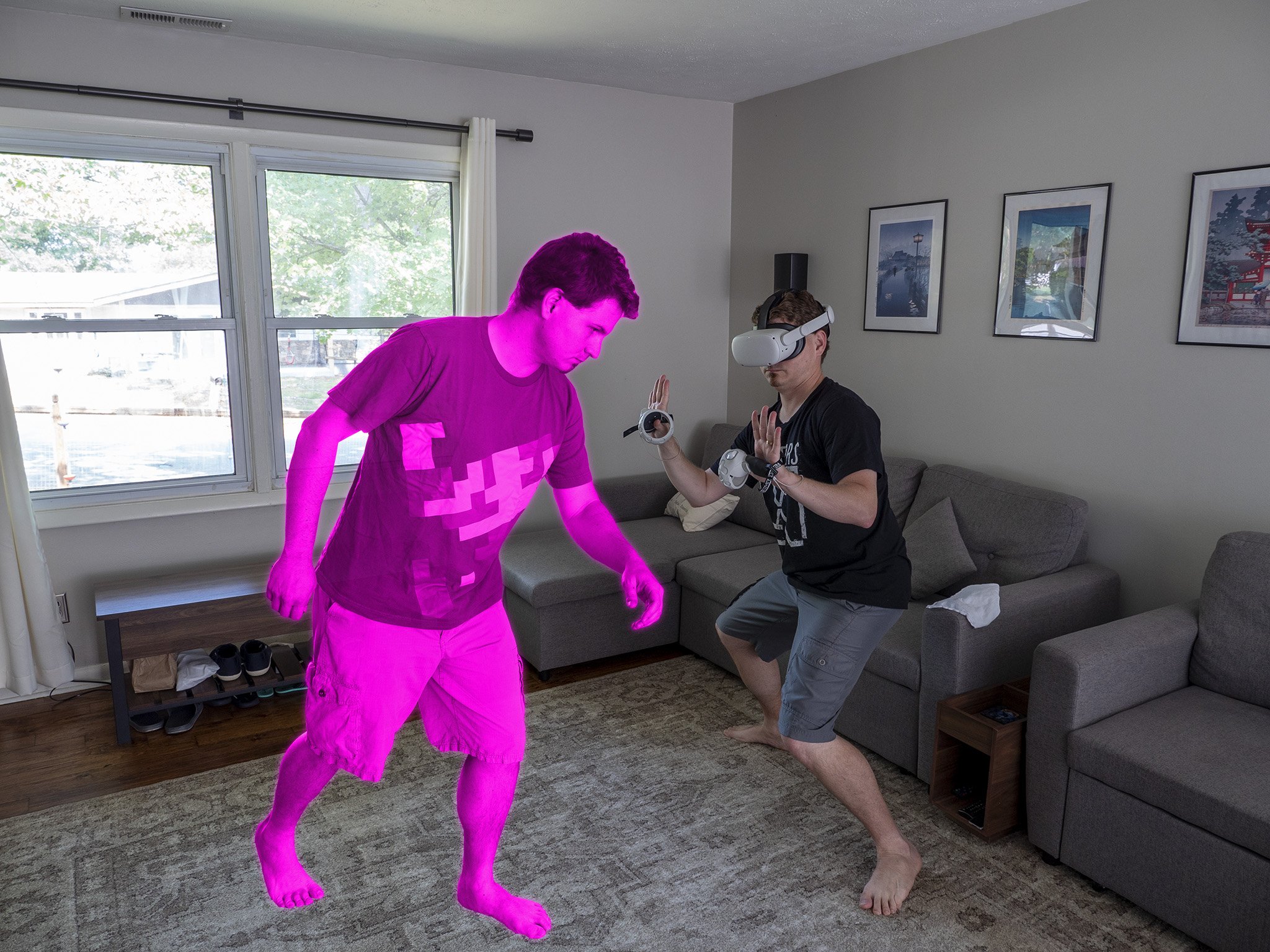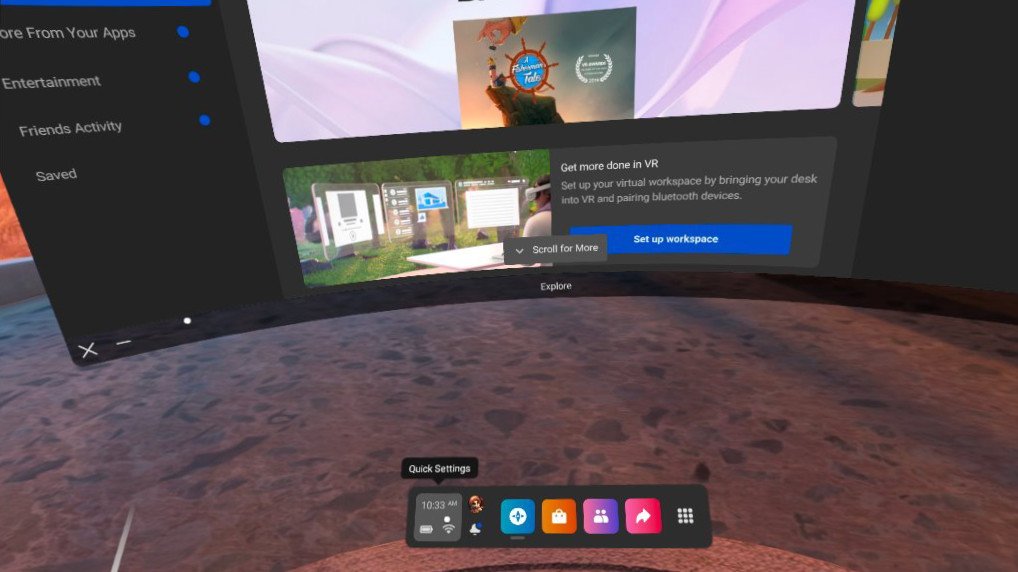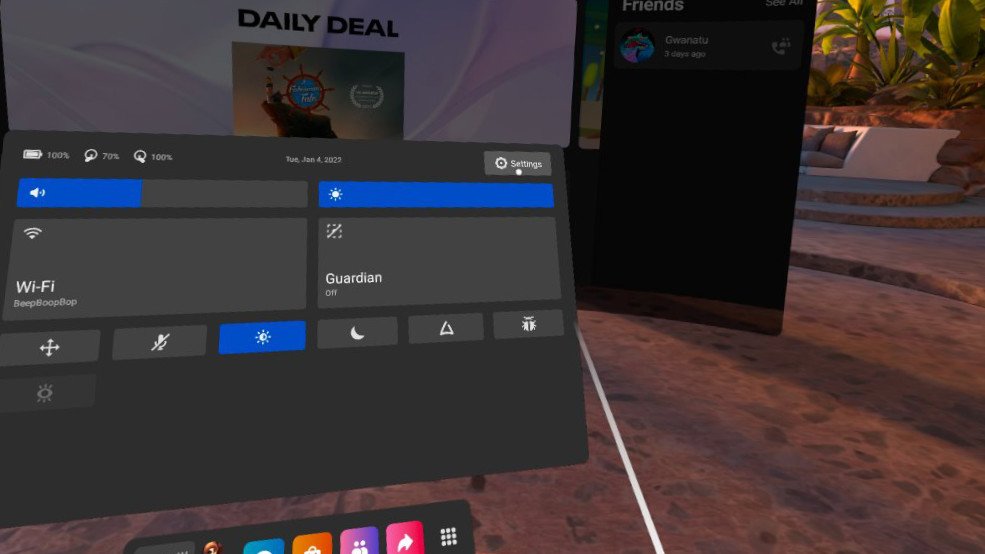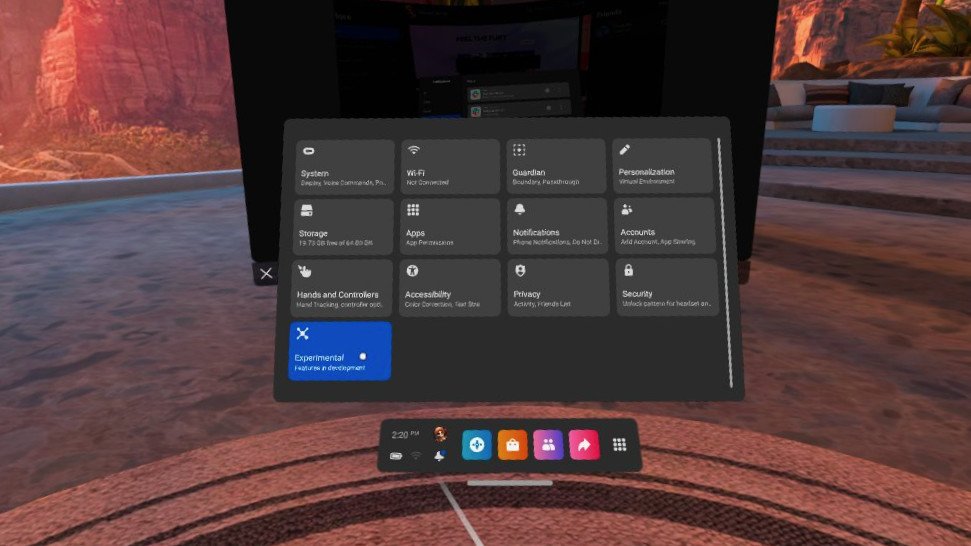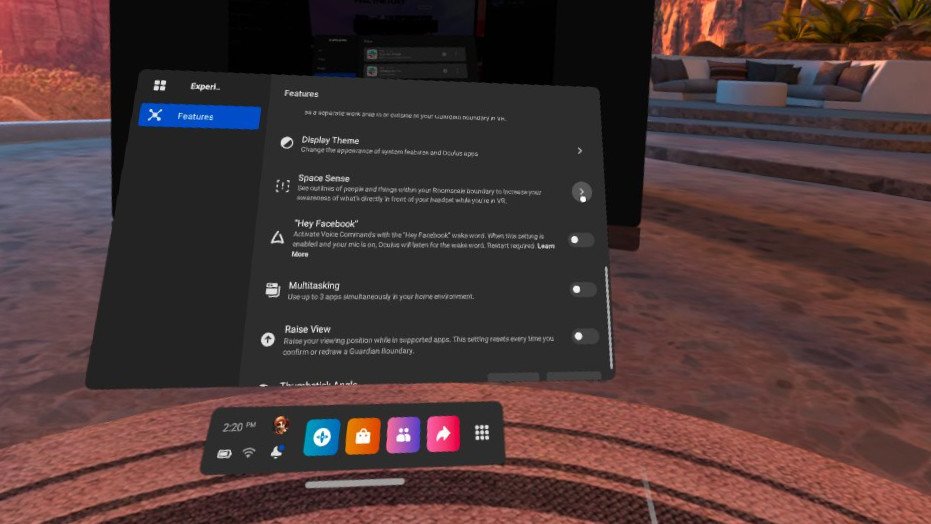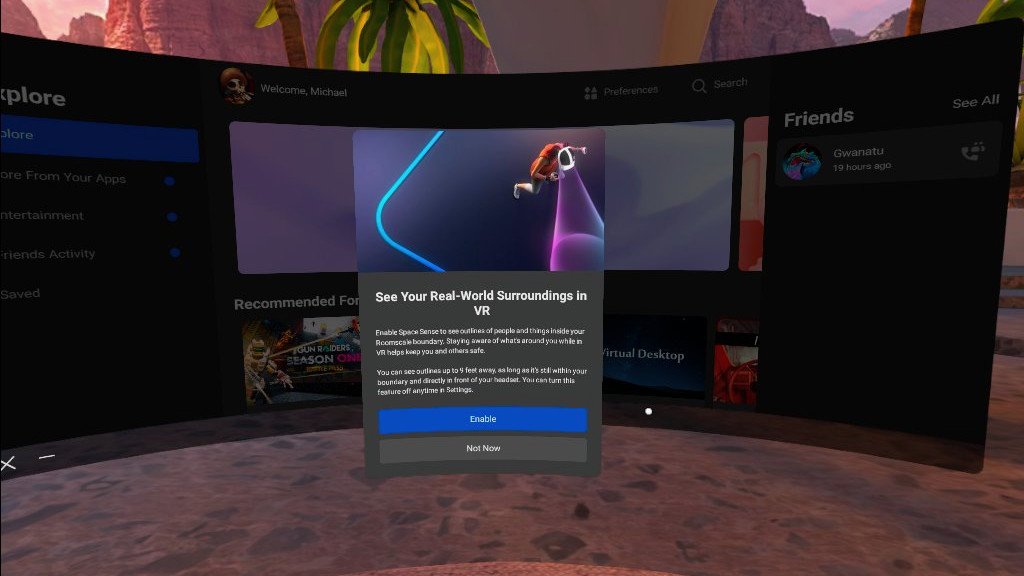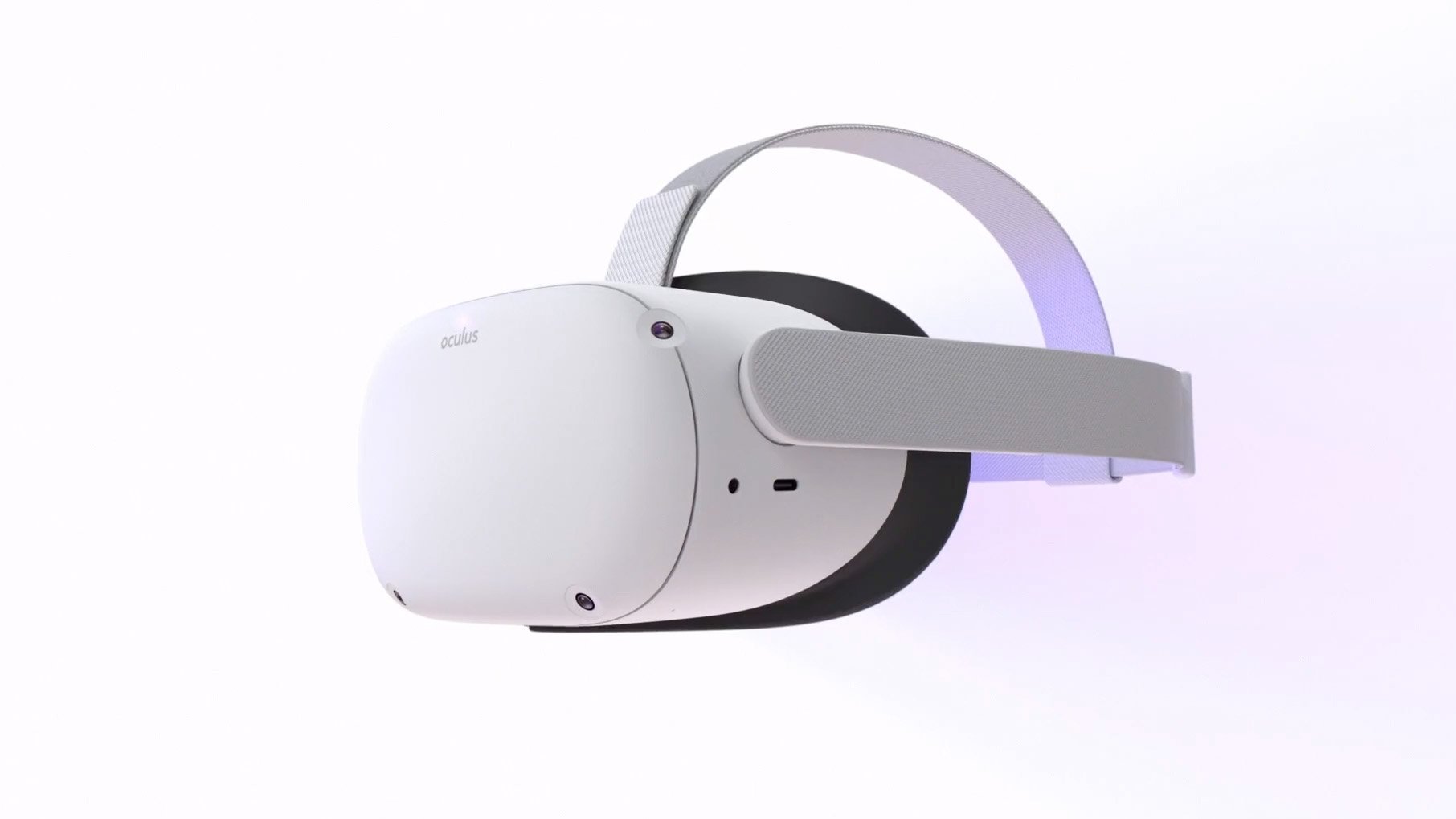Using the Quest 2 in a communal space can end in disaster if a person or pet unexpectedly enters your Guardian circle. Thankfully, Meta developed Space Sense, a new detection system that makes people visible when they get too close. It's an experimental, unpolished system that is hard to find if you don't know where to look. Here's how to use Space Sense on the Oculus Quest 2.
How to turn on Oculus Quest 2 Space Sense
- Go to the main menu by pressing the Oculus button on the right controller.
-
Select Quick Settings on the left side of the Universal menu.
-
From there, select Settings on the top-right side of the menu.
-
Next, select Experimental Settings.
-
Scroll down until you find Space Sense. Select that option, then toggle on the feature. You've activated Space Sense!
Space Sense registers any person or object within your Guardian area from up to 9 feet (2.74 meters) away, with the color changing from blue to pink to red based on how close the thing is. They'll appear as a colorful, cartoonish outline when you look in their direction that's impossible to ignore. So even something small like a cat should be fully visible if the cameras pick it up.
Should you use Space Sense on the Quest 2?
Space Sense's usefulness will depend on the size of your space and your tolerance for distractions. If you're playing in a small room where objects fall within your Guardian, they will be constantly visible. However, because the cameras don't support high resolution, the outlined objects will waver distractingly in midair; and you can't change the sensitivity only to have objects appear right next to you.
You also won't know if someone comes up behind you, though we don't hold that against a headset with only front-facing cameras.
Put plainly, Space Sense works best if you have a dedicated VR space where people rarely enter into it, so it protects you and others in rare cases. If you're constantly looking at "sensed" objects, it'll take away from your immersion when playing the best Quest 2 games.
Some games like Blaston incorporate a Space Sense-like passthrough feature even if you have Space Sense disabled, but it's not a common feature.
It most likely will work much better on the Oculus Quest Pro, which will allegedly be designed with better cameras for AR passthrough.
As for the Quest 2, it remains a headset that works best if you have an isolated space where pets and people aren't likely to tread. But if you live in a crowded household, you can enable multiple accounts on the Quest 2 and get your family and friends invested in VR with you.
VR gaming on the go
Oculus Quest 2
$299 at Amazon $299 at Best Buy $299 at Walmart
Portability has never been so powerful
The Oculus Quest 2 is the best VR gaming system on the market, with amazing, immersive games that transport you to new worlds.
Source: androidcentral
